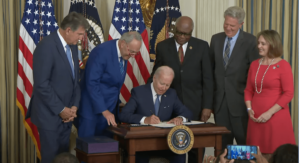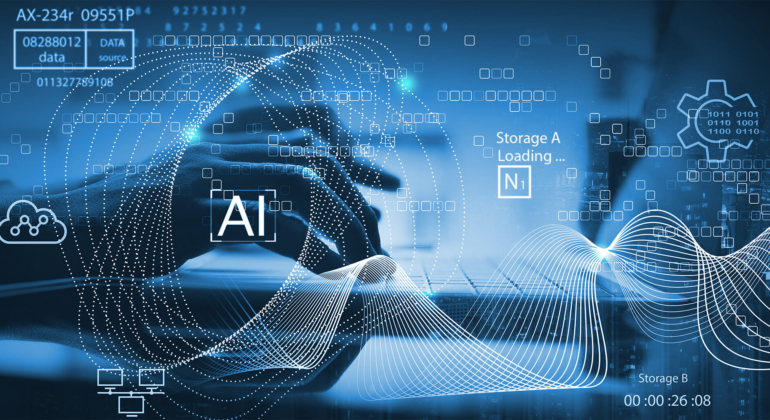When Kiterocket hired me in 2011, the U.S. solar industry was taking toddler steps: growing fast, but a bit unsteady on its feet. Nearly 1.86 gigawatts (GW) of solar were deployed that year, according to industry statistics from SEIA and GTM Research, and that gigawatt-plus number looked huge. By year’s end, the total amount of solar installed in the U.S. was a whopping 3.95 GW. It was all very exciting—so many megawatts!
What a difference a decade makes.
In 2021, 23.6 GW was deployed, despite the severe headwinds of COVID-19, supply-chain disruptions, and tariffs, according to the U.S. Solar Market Insight annual report. When the year came to a close, the total installed solar capacity in the U.S. reached 92.5 GW—and we passed the 100 GW milestone in early 2022. As for energy storage in 2011, there really wasn’t an industry per se, other than random lead-acid backup battery banks and some off-grid homesteader business. In 2021, the sector hit over 4.6 GW of installs, more than triple the amount achieved in 2020. Boom.
What do these numbers tell us? The total solar capacity installed grew by more than 23X and the annual rate of installations by 12.6X from 2011 to 2021—in other words, exponential growth.
But these head-spinning stats are just the preamble to what will be a much bigger story. As impressive as the numbers are, they pale in comparison to what lies ahead, now that the Inflation Reduction Act of 2022 (IRA) has been passed by Congress and signed into law by President Biden.
For most of us, we never thought we’d ever see anything like this—especially because a few months ago, the earlier version of the legislation seemed to be DOA and destined to fail. But the clean-energy community never stopped believing (cue the song), and after tireless lobbying (thanks SEIA, ACP, et al.!) and some backroom wrangling in the U.S. Senate, they reached a compromise.
While the IRA is not perfect, the sprawling bill still represents the most serious and ambitious investment the federal government has ever made in clean energy and climate solutions.
While the IRA is not perfect, the biggest chunk of the sprawling bill still represents the most serious and ambitious investment the federal government has ever made in clean energy and climate solutions. It also rings the starting bell loudly for the Terawatt Decade—these are the years when solar in the U.S. will/must reach a terawatt of installed capacity and hundreds of gigawatts of energy storage, and accelerate from there. The deployment of wind power must also pick up the pace. In other words, we need even bigger, hairier, more audacious growth in order to make solar and clean energy the primary generation source in the U.S.
The content, implications, and promise of the IRA have been widely reported and analyzed. The shortest description would be to call it something rare in U.S. history—actual industrial policy. The host of investment, production, and other long-term tax credits for projects, combined with manufacturing credits for a healthy solar module value chain, tracker tubes, inverters, and other components—as well as a plethora of other incentives and credits for EVs, heat pumps, microgrids, green hydrogen, wind, and more—make for a mighty package. As many analysts and other industry observers have noted, the IRA provides policy and regulatory certainty in a way no previous legislation has done.
The IRA provides policy and regulatory certainty in a way no previous legislation has done.

Rather than get into the weeds of the 730-page IRA document, here are a few takeaways.
Workforce development is essential. There’s already a clean-energy talent gap—we don’t have enough trained people working in clean energy. To meet the lofty goals of climate relief and clean-energy transformation, we will need hundreds of thousands of additional workers engaged by 2030. We must implement more training programs and retool school curricula to meet the challenge. The surge in job creation will be a boon to the economy in its own right.
To meet the lofty goals of climate relief and clean-energy transformation, we will need hundreds of thousands of additional workers engaged by 2030.
And that includes mission-driven marketing, public relations, and communications professionals. Those with a passion for climate solutions and the subject-matter expertise necessary to take this on are relatively few in number so far. We must be ready to help the changemaking companies and organizations tell their stories, refine and promote their brands, and reach their customers and the general public with resonant messaging. True corporate sustainability will be within our reach more than ever before. I would also love to see university journalism and PR departments create hybrid degrees blending clean-energy and climate studies with the core journo and PR curriculum.
Manufacturing will be coming back to the U.S. in a big way. Other than First Solar and its unique cadmium-telluride thin-film PV technology, there is no vertically integrated solar module manufacturing in the States. Several companies have established module production plants, but there is no crystalline silicon solar wafer and cell manufacturing. None. And while we do have some limited polysilicon capacity, it must be greatly expanded to meet the lofty numbers needed.
It will take several years to build out a domestic manufacturing base, but the IRA provides the incentives and policy tools to encourage that effort. Some companies have established or are looking at establishing or expanding their U.S. manufacturing assets. And it’s not just about solar modules, which is why we’ve been stoked to see companies like Nextracker (a client) help create steel fabrication facilities in several U.S. locations supplying torque tubes for their tracker installations in utility solar plants across the country.
It will take several years to build out a domestic manufacturing base, but the IRA provides the incentives and policy tools to encourage that effort.
It’s go time. While the IRA might be the best thing since sliced silicon, it does come with a daunting mantle of responsibility. The amount of clean energy that needs to be deployed over the next decade and beyond will require a massive collaborative effort by all involved, not just in the U.S. but worldwide. We will have to be running on all cylinders to get it done (apologies for the outdated ICE metaphor).
Our mission is clear: transform the energy economy, create an economic tsunami of opportunity and job creation, promote environmental justice, and avert the worst of the climate crisis by greatly reducing greenhouse gas emissions. No one said it was going to be easy—but our kids, grandkids, and great-grandkids are worth it, don’t you think?
(To learn more, a good compendium of IRA resources can be found on the ever-evolving dedicated content pages on the SEIA site: https://www.seia.org/research-resources/inflation-reduction-act-solar-energy-and-energy-storage-provisions-summary.)

